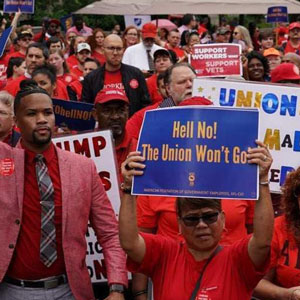Expanding CEO-to-worker pay gap bad for business
Companies whose CEOs earn hundreds of times their average employee’s pay are viewed as less desirable to work for, and to do business with, according to a new UC Berkeley study.

Probing a new angle of income inequality, UC Berkeley researchers sought to determine how people would feel about a company once they knew what the top executive made compared to the workers.
Their findings, just published in the online issue of the Journal of Experimental Social Psychology, suggest that the wider the pay gulf, the more negative the perception of the company from the standpoint of potential employees and consumers.
“Our results indicate that consumers are less interested in purchasing from and getting a job at companies with high CEO-to-worker compensation ratios,” said study lead author Arianna Benedetti, a Ph.D. student in psychology at UC Berkeley.
The study is especially timely in the face of the Security and Exchange Commission’s new requirement that publicly held corporations disclose their CEO-to-worker pay ratio. The most recent filings indicate an average CEO-to-worker ratio of 361:1. For Fortune 500 companies, the gap can be 10 times wider.
Notably, study participants were more bothered by the disparity between executive compensation and worker wages than by the actual amount people made, suggesting a visceral disapproval of businesses whose profits fail to trickle down the corporate ladder.
“This likely reflects a psychological aversion toward inequity, which develops early in life,” said study senior author Serena Chen, a psychology professor at UC Berkeley. “For example, if a CEO makes a great deal of money, but the average worker also makes a good wage, people feel that the wealth is being distributed more fairly and in turn will have a more positive impression of the company.”
 Public distaste for a gaping CEO-to-worker pay ratio could translate into difficulties recruiting talent and attracting investors, and result in lukewarm reviews on crowdsourcing forums like Yelp.
Public distaste for a gaping CEO-to-worker pay ratio could translate into difficulties recruiting talent and attracting investors, and result in lukewarm reviews on crowdsourcing forums like Yelp.
That said, the disparity did not influence study participants’ view of a company’s overall success or ability to innovate. Moreover, negative feelings about companies with large CEO-to-worker pay gaps lessened when they learned more details about a CEO’s actual responsibilities.
How they conducted the study
For a series of studies, UC Berkeley researchers recruited more than 1,000 participants nationwide via Amazon’s Mechanical Turk crowdsourcing platform as well as Bay Area networks.
Among other tasks, participants read a detailed description of a mock company modeled after an actual company. Different participants were presented with different CEO-to-worker ratios ranging from 25:1 to 350:1 so that researchers could see how their evaluations were influenced by high and low ratios.
They then rated the companies based on such measures as employee morale, employee wellbeing, work-life balance, collaboration, innovation, trustworthiness, global impression and ratio fairness. They also rated their likelihood of purchasing the company’s products and working for the company.
The results consistently demonstrated that a company’s internal morale and external reputation could be positively or negatively influenced by the CEO-to-worker pay gap. Moreover, they reflect real-world data that the researchers collected from the job search website, Glassdoor.com that shows a connection between CEO-to-worker-pay ratios and reviews of companies.
“Our study shows that CEO-to-worker ratios really matter to employees and consumers alike,” Benedetti said. “These results demonstrate that, now that publicly traded companies have started to disclose their CEO-to-worker ratios, they need to be cognizant of and prepared for the effects such disclosure may have.”
STUDY: High CEO-to-worker pay ratios negatively impact consumer and employee perceptions of companies.
